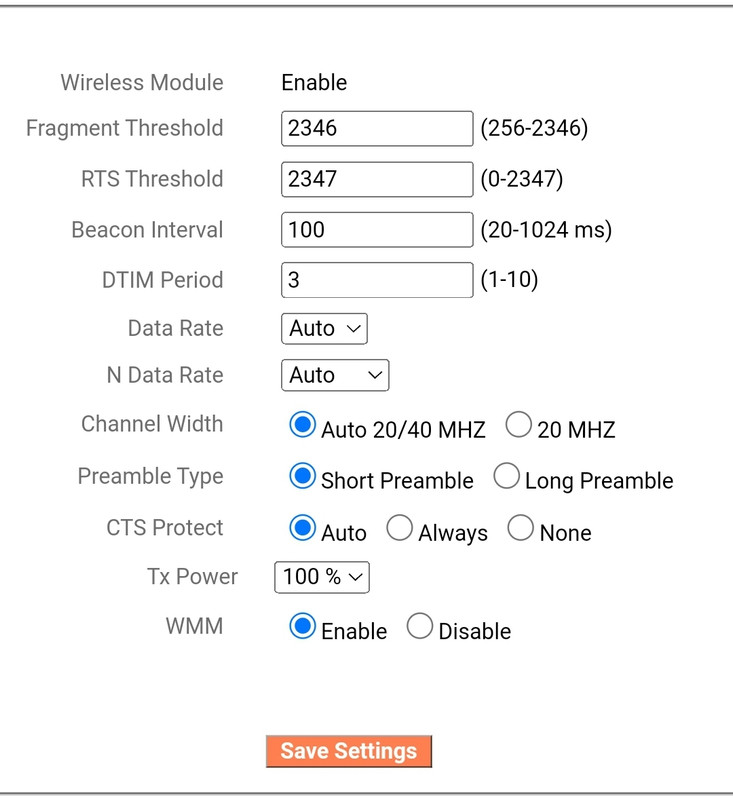Hello.
I have an old Edimax BR-6428nS wireless router that does its job for my humble purpose. I always wondered about advanced wireless settings in its web interface that I never touched.
Recently wireless throughput and ping times changed not for the better so I changed the channel on 2.5GHz band and it improved. But I am still curious about these advanced settings and whether they can be optimized.
Data rate has the following options: 1M, 2M, 5.5M, 11M, 6M, 9M, 12M, 18M, 24M, 36M, 48M, 54M
N data rate has options ranging from MCS0 up to MCS15
I remember setting channel width from 40MHz to 20MHz on a different router and found that 40MHz get me higher throughput in single connection but low throughput in multiple connections in Speedtest. Also the reach of wireless suffered despite showing full signal strength so I had to change tablet's direction a few degrees. I decided to return to 20MHz frequency because overall single and multiple connections have balanced and wireless signal quality was stable and my tablet could remain in same position.

I have an old Edimax BR-6428nS wireless router that does its job for my humble purpose. I always wondered about advanced wireless settings in its web interface that I never touched.
Recently wireless throughput and ping times changed not for the better so I changed the channel on 2.5GHz band and it improved. But I am still curious about these advanced settings and whether they can be optimized.
Data rate has the following options: 1M, 2M, 5.5M, 11M, 6M, 9M, 12M, 18M, 24M, 36M, 48M, 54M
N data rate has options ranging from MCS0 up to MCS15
I remember setting channel width from 40MHz to 20MHz on a different router and found that 40MHz get me higher throughput in single connection but low throughput in multiple connections in Speedtest. Also the reach of wireless suffered despite showing full signal strength so I had to change tablet's direction a few degrees. I decided to return to 20MHz frequency because overall single and multiple connections have balanced and wireless signal quality was stable and my tablet could remain in same position.


